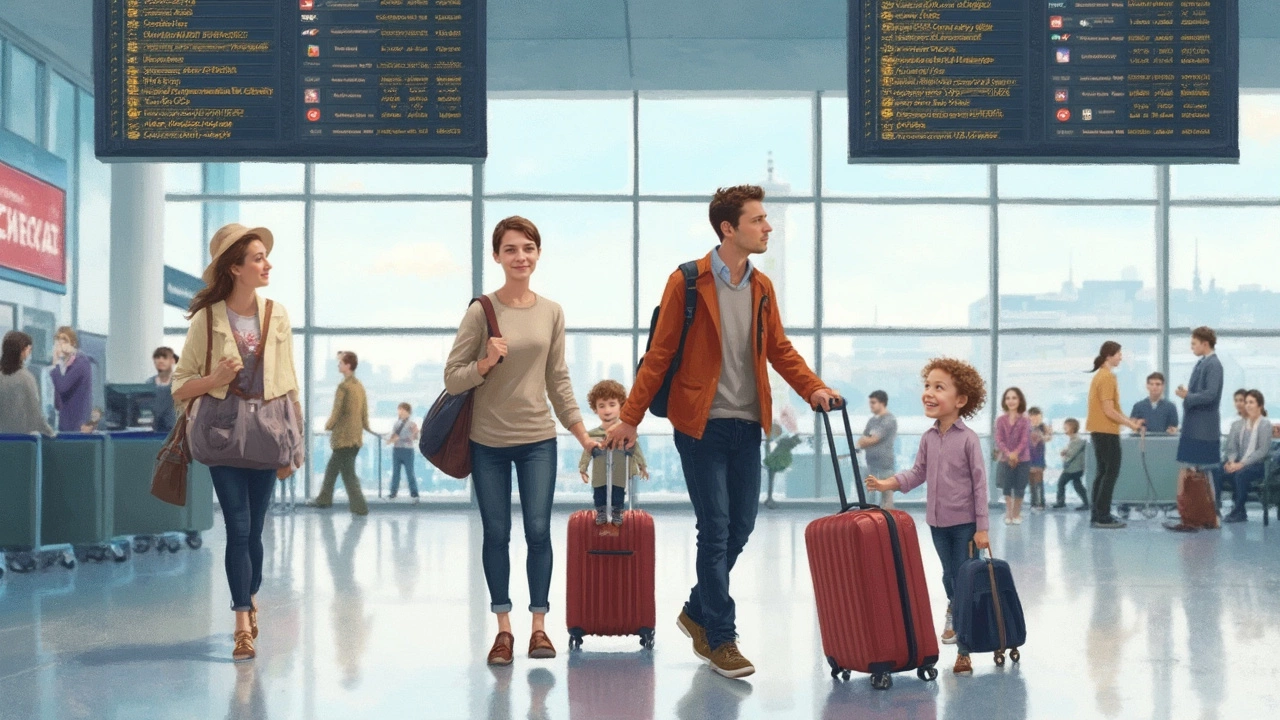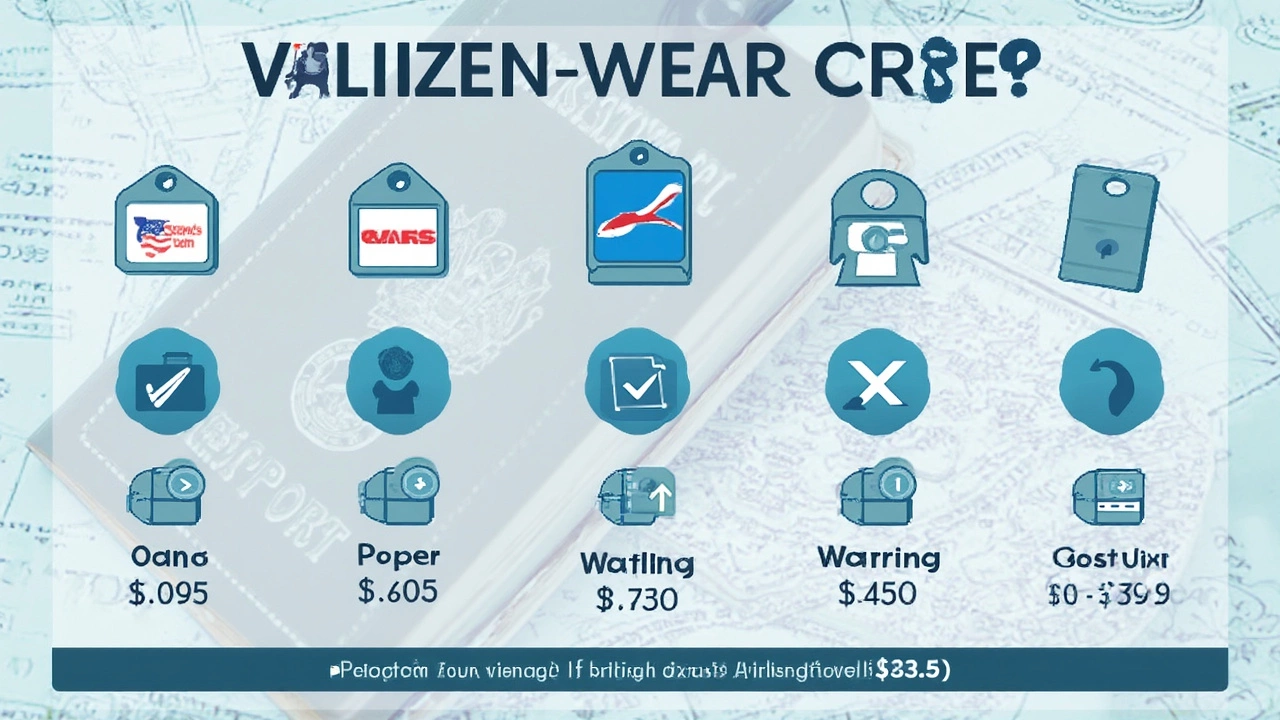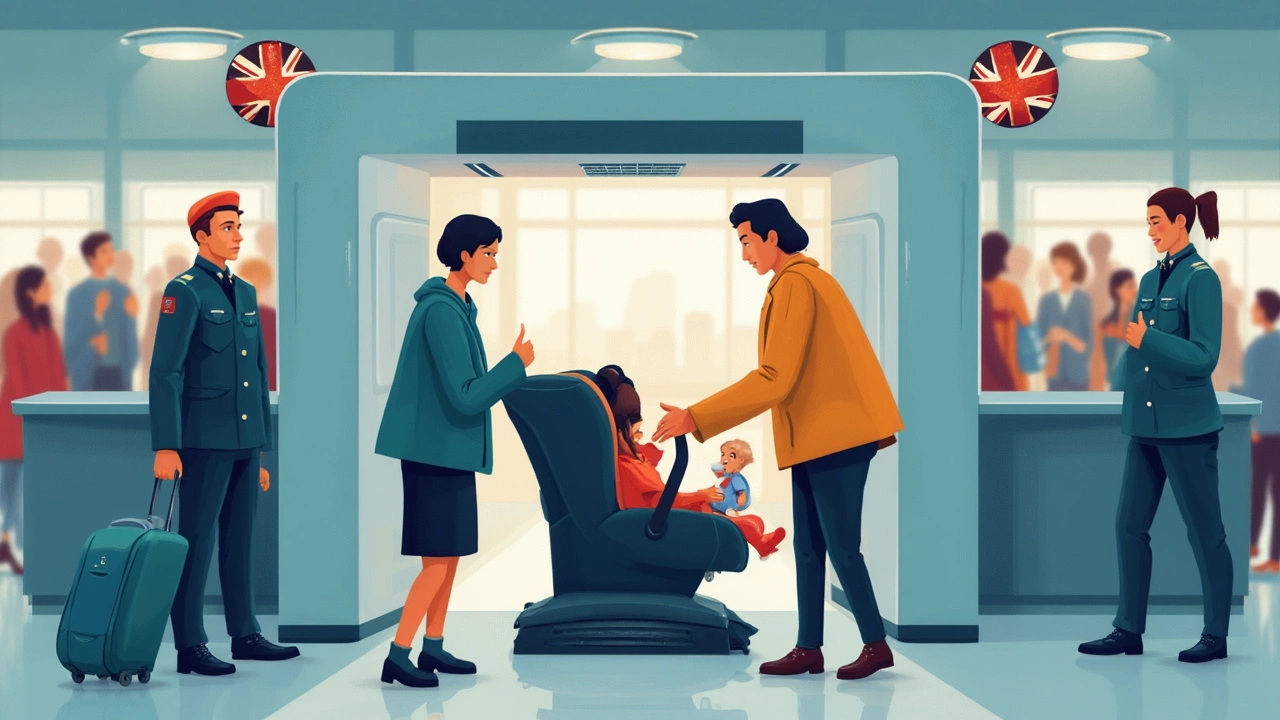Carseat Costs on Airplanes: What You'll Actually Pay

Ever get that sinking feeling at the airport, worried you’ll get slapped with a surprise fee for your carseat? You’re not the only one. Traveling with kids is enough of a circus, so let’s cut through the stress and get to the bottom line: most airlines in the U.S. let you check a carseat for free—even low-cost carriers like Spirit and Frontier.
But—and there’s always a but—rules change if you want to use your carseat on board or if you’re flying internationally. Some airlines limit how many “baby items” you can check. Others make you gate-check the seat, so if you expected to carry it to your seat, you could be in for a scramble at boarding.
The tiny print on your ticket can hide some wild rules. Some require your child to have their own paid seat to use a carseat, while lap infants usually don’t get to bring one into the cabin. Also, European and Asian airlines might have stricter policies—or charge for literally anything beyond basic luggage.
- Do Airlines Charge for Carseats?
- Rules by Major Airlines
- Tips to Avoid Extra Costs
- What to Expect at Check-In and Boarding
- Common Mistakes and Surprising Facts
Do Airlines Charge for Carseats?
Here’s the good news: if you’re flying any big U.S. airline and just want to check a car seat, you usually won’t pay extra. Airlines like American, Delta, United, Southwest, JetBlue, and Alaska all let you check a carseat free of charge, in addition to your regular checked bags. That’s true even if you bought a basic economy ticket or are flying with a budget airline.
But things aren’t always that simple. The policy generally covers car seats and strollers, but not bulky travel cribs or other gear. Also, some smaller or international carriers might not be as generous. For domestic flights in 2025, here’s how the main U.S. airlines stack up:
| Airline | Carseat Check Fee | Limit Per Child | Other Details |
|---|---|---|---|
| American | No | 1 car seat + 1 stroller | Extra items may get charged as regular baggage |
| Delta | No | 1 car seat + 1 stroller | Gate check or counter check both fine |
| United | No | 1 car seat + 1 stroller | Special policies for international flights |
| Southwest | No | 1 car seat + 1 stroller | Very family-friendly; gate check easy |
| JetBlue | No | 1 car seat + 1 stroller | Oversized or extra items could cost more |
| Spirit/Frontier | No | 1 car seat + 1 stroller | Watch out for extra baby items |
Flying internationally or with foreign carriers can be a different story. For example, some European airlines only allow one baby item (stroller or carseat, not both) for free. A few budget international airlines charge $20-$40 per carseat, or only if checked at the gate, so it pays to check the details before you go.
One more tip: carseat on airplane rules almost always depend on where and how you bring it. Checked at the ticket counter? Almost never a fee. Want to use it on-board? Your child needs a paid seat, and the seat must be FAA-approved (look for a sticker). Gate-checking is usually free too, but if you have more than one car seat, sometimes one gets counted as a regular bag. And if you’re connecting between airlines, check every carrier’s rules—it’s not always one-size-fits-all.
- Check your airline’s website ahead of time for their 2025 car seat rules.
- Print out the policy in case the ticket agent is unsure—mistakes at check-in happen all the time.
- Never assume your airline follows the same policy as others, especially international or tiny budget carriers.
The bottom line: for most U.S. flights, checking a carseat won’t cost you a dime. Problems only pop up if you bring extra items, fly internationally, or if you want to use the seat in the cabin without buying your child a ticket.
Rules by Major Airlines
Rules for bringing a carseat on airplane trips really depend on which airline you’re flying. U.S. carriers usually let you check a car seat for free, either at the ticket counter or the gate, but there are some quirks between the big names.
Here’s what you’ll get with the major U.S. airlines in 2025:
- American Airlines: You can check one car seat and one stroller per child for free. If you want to use the car seat in the cabin, your child needs their own ticket. They’re pretty flexible, but your car seat must be FAA-approved if you plan to install it on the plane.
- Delta: Same deal—one car seat per child checked for free, and you can use an FAA-approved car seat in the cabin with a ticketed child. The staff at the gate usually know how it works, but tell them early if you plan to bring a seat onboard.
- United Airlines: Allows free checked car seats and strollers. To use in the cabin, your child needs a reserved seat and the car seat must fit properly. United will sometimes ask for proof the seat is “approved” so snap a photo of the sticker on your seat at home, just in case.
- Southwest: Lets you check car seats at the counter or gate for free. They’re known for being laid-back, but the same FAA rules apply if you’re installing the car seat onboard. Southwest recommends calling ahead if you have a unique or large seat.
- JetBlue: You get free car seat check-in or gate-checking, and bringing one into the cabin is allowed with a paid ticket for your child and FAA approval. Keep in mind, overhead bins aren’t for car seats—even when the crew looks stressed.
International airlines can be hit or miss. British Airways, for instance, only allows car seats on board if you’ve booked a child fare and the seat meets their (sometimes confusing) size rules. Air Canada and Lufthansa are a bit more parent-friendly, but you might get hit with fees for extra baby gear.
The fine print: Always check the airline’s official rules a few days before you fly. Some policies shift quietly, and gate agents don’t always have an answer on the spot. If you’re still not sure, call the airline directly—sometimes the old-fashioned way is the only way to avoid a last-minute headache at the airport.

Tips to Avoid Extra Costs
Want to skip random fees when traveling with your carseat? Start by checking your airline’s policy before you book—don’t just cross your fingers and hope. Every carrier has its own set of rules, and these change more than you’d think. Go right to the airline’s official website page about infant or child travel; that’s where you’ll find the details, not buried in the fine print of your ticket.
Always pack smart. If you can, use a carseat travel bag. Some airlines say carseats need to be in a bag to be checked for free. A cheap gate-check bag from Amazon saves you tons of hassle and often keeps the staff off your back.
- If you’re flying a U.S. carrier, you’re in luck: almost all allow you to check one carseat on airplane per child for free. This works for both checked baggage and at the gate.
- If you need a stroller, most airlines also throw that in for free, but double-check for international flights—some charge extra.
- Traveling with twins or a toddler and a baby? Call ahead and ask if you can check two carseats, especially if only one kid has a ticket. Rules might vary.
Here’s a trick: If you’re hoping to use your carseat in the cabin, buy your child a separate ticket instead of going the lap-infant route. Most airlines require a paid seat for the carseat to be installed on board. Don’t wait until check-in, or a sold-out flight will leave you dragging your carseat back to the gate!
Last tip—if you do end up paying, look into airline loyalty programs or credit cards that cover baggage fees. You’d be surprised how often that perk includes children’s gear. Some travel cards will reimburse checked baggage or even incidentals.
Bottom line: Do your homework, call the airline if you’re not sure, and don’t believe random tips you find on forums until you confirm with the actual carrier. A five-minute check can save you $50 or more on your next flight.
What to Expect at Check-In and Boarding
The moment you walk up to the airline counter with your carseat, expect a few questions. Agents usually ask if you’ll be using the carseat on the plane or if you want to check it. If you’re checking it, almost every U.S. carrier—like Delta, United, Southwest, and JetBlue—lets you check one carseat and one stroller per child for free. That means: no fee out of your pocket for the carseat at check-in.
If your plan is to use the carseat in the airplane seat, make sure you paid for your child’s ticket. Most airlines require that a carseat in the cabin is used only for a child with a reserved seat—not for lap infants. Also, double-check the carseat for a visible FAA approval sticker (usually red writing on white), because gate agents will look for this before you board. If it’s not visible, you’re likely being told you can’t bring it onboard.
- At check-in, tell staff clearly if you want to gate-check the carseat (especially if you want to use it up until boarding, or have a connecting flight).
- Make sure your carseat is tagged for the final destination, especially if you’re connecting.
- If you’re taking it onboard, get to the gate early. Gate agents sometimes want to confirm your carseat’s approval before giving you early boarding privileges.
When boarding happens, families traveling with kids usually get to board early. This is your chance to install your carseat without traffic jams in the aisle. Installing a carseat on a plane can feel clunky—seats are narrow, and recline buttons can be tough to reach—so don’t be shy to ask a flight attendant for extra time or advice.
Most airlines will store a checked carseat in oversized baggage, so it may take longer to show up at baggage claim. Some parents wrap carseats in plastic or bags (sold at most airports) for extra protection.
Keep in mind, international airlines may have stricter baggage rules and charge for carseats as part of your luggage allowance—so always double-check before you fly.
So, if carseat on airplane costs are your worry, relax a bit—just follow these steps and you’ll dodge most fees and headaches at the airport.

Common Mistakes and Surprising Facts
People end up wasting money or getting stressed out at the airport because they run into the same carseat slip-ups. One of the biggest goofs? Assuming all airlines play by the same rules. In reality, every carrier has different policies—and they change often. For example, Delta and United let you check a carseat for free, but on some flights with budget carriers in Europe or Asia, you might get hit with a checked-bag fee if you don’t double-check the tiny print.
Another mistake: not labeling your carseat. Airports can get chaotic, and untagged seats sometimes end up lost. Add a name and phone number before you check it in, so it doesn’t pull a disappearing act. To avoid damage, folks often forget to put their carseat in a protective bag. Baggage handlers aren’t known for their gentle touch, as tons of parents report bumps and cracks in the hard plastic after flights.
People also think you can always use a carseat on board if you buy a seat for your child. But here’s the twist: your carseat has to be FAA-approved, with a sticker that clearly says so. Bring a non-approved seat, and you could end up stuffing it in overhead or gate-checking it last minute. Some European airlines flat-out refuse carseats in the cabin, so always check the airline website a few days before you fly.
- Check the airline’s current carseat on airplane policy before booking—rules change all the time.
- Tag your carseat with your contact info to avoid mix-ups or losses.
- Get a cheap padded gate check bag so your seat isn’t trashed by baggage handlers.
- Make sure your carseat has the FAA-approved label, especially for U.S. flights.
- Don’t assume gate agents, even in the U.S., know every rule—be ready to show them written proof.
Here’s a quick look at current (2025) baggage policies for major U.S. airlines:
| Airline | Checked Carseat Fee | Gate Check Allowed | Notes |
|---|---|---|---|
| Delta | Free | Yes | Limit 1 carseat + 1 stroller per child |
| American | Free | Yes | No size/weight limits |
| United | Free | Yes | International rules vary |
| Spirit | Free | Yes | Stroller and carseat travel as separate items |
| JetBlue | Free | Yes | 1 carseat and 1 stroller, but must be used by a child |
One quirky fact: “Cares” harness systems are the only other restraint that’s FAA-approved for use on U.S. airline seats—booster seats are never allowed during takeoff or landing. And honestly, don’t trust that the person at the check-in desk knows these details. Snap a screenshot of the airline’s latest carseat page or print it out if you want zero drama at the airport.